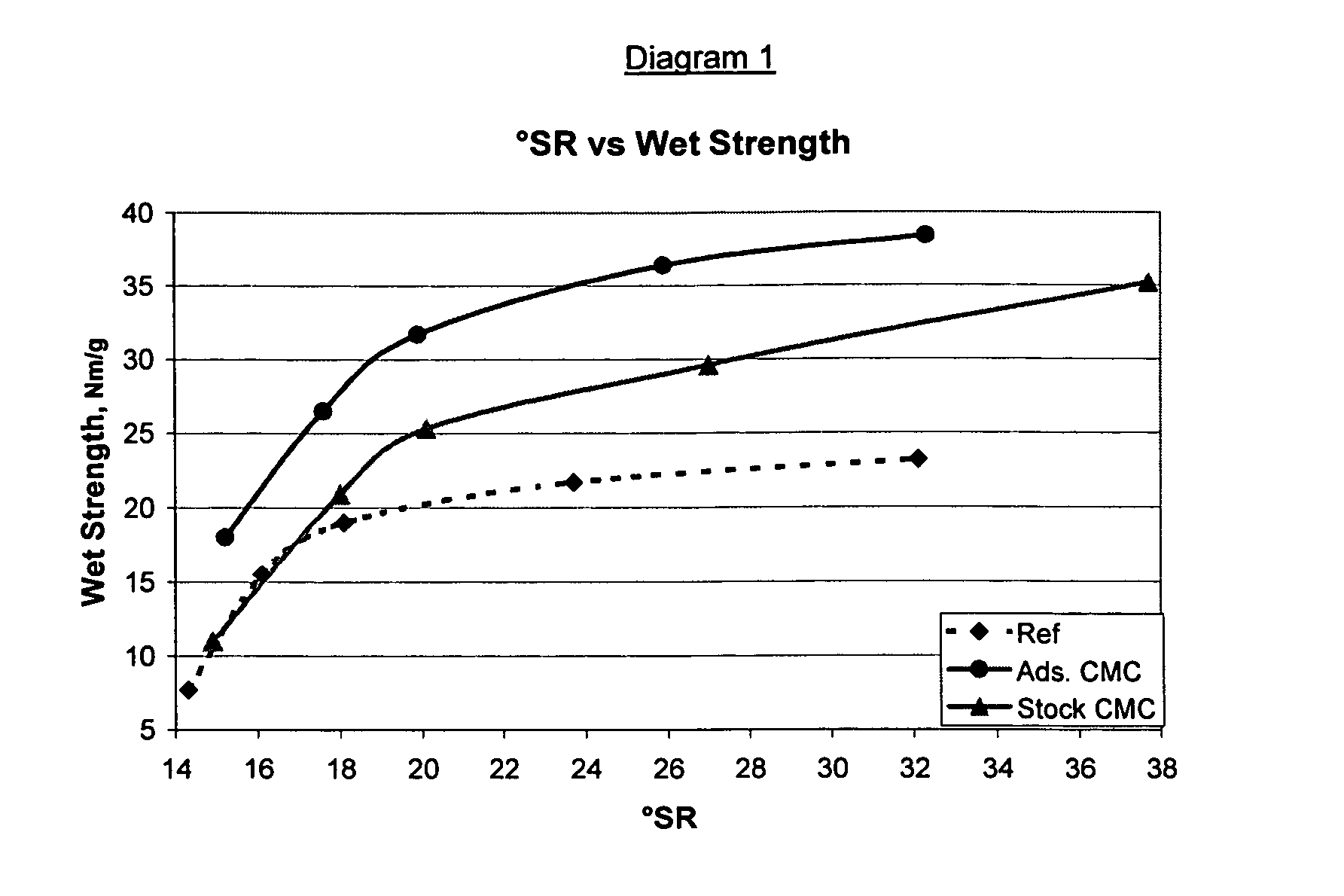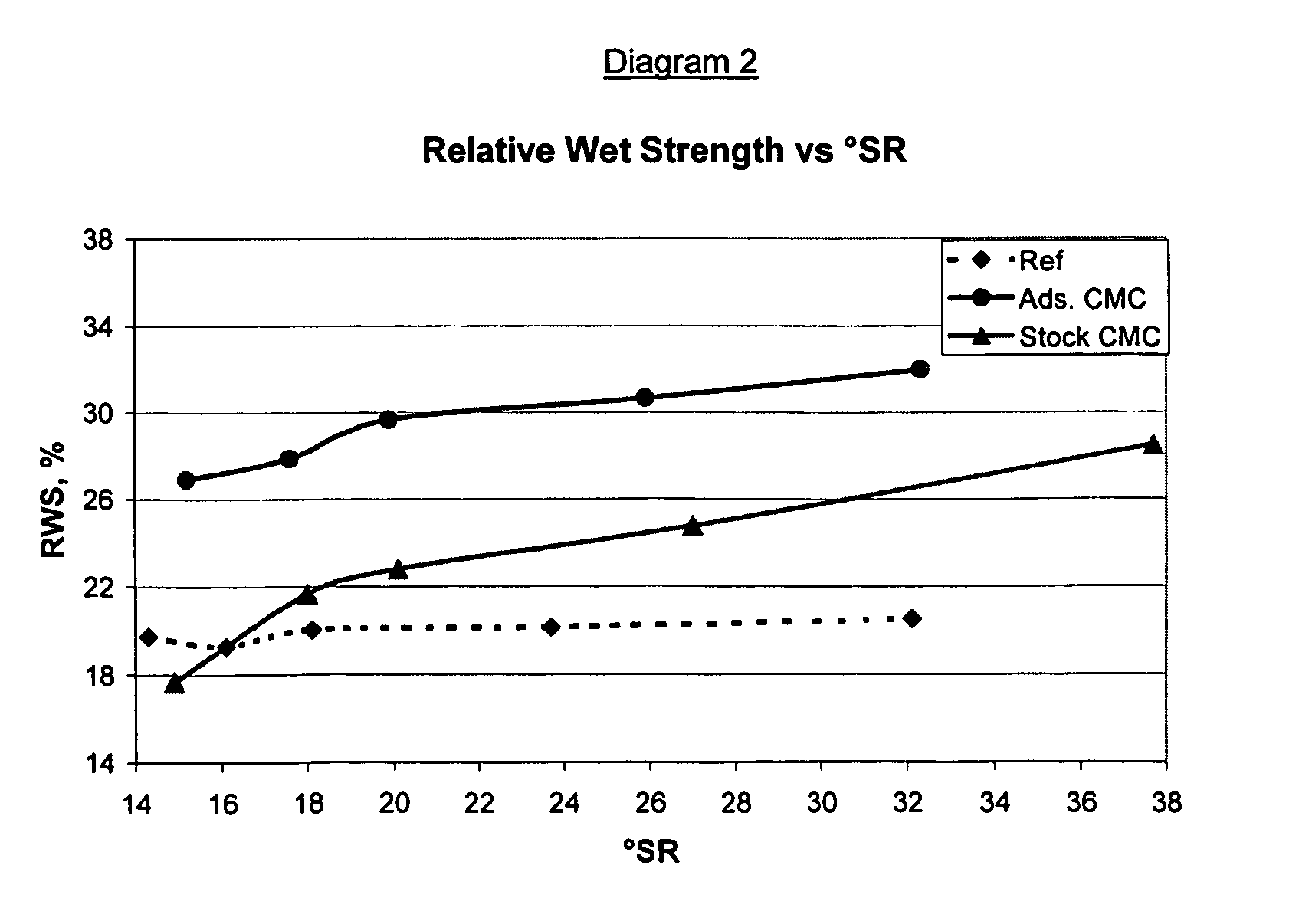Method of treating cellulose fibres
a technology of cellulose fibres and cellulose fibers, which is applied in the field of papermaking, can solve the problems of increasing the risk of calcium oxalate precipitation, and the equipment used in the bleaching process may then become clogged with such precipitates, so as to improve increase surface charge, and enhance the softness of paper sheets
- Summary
- Abstract
- Description
- Claims
- Application Information
AI Technical Summary
Benefits of technology
Problems solved by technology
Method used
Image
Examples
Embodiment Construction
[0029] The aim of the experiment was to adsorb CMC to fibres in a final acidic bleaching stage which here was a chlorine dioxide stage. Even though not necessary, calcium chloride was used to enhance the adsorption. The used pulp was a five stage Elemental Chlorine Free bleached softwood pulp of full brightness having a final brightness of 90% ISO. A reference pulp was treated as the CMC modified pulp according to the invention but without the charge of CMC. The final chlorine dioxide stage was performed at 80° C. for 180 minutes at a 10 wt % pulp consistency. The chemical charges were: 10 kg / t chlorine dioxide, as active chlorine 7 kg / t, 18 kg / t calcium chloride calculated as Ca2+ based on the weight of dry pulp. The end pH of the chlorine dioxide stage was 2.8. The used CMC was Finnfix WRH from Noviant. The degree of substitution was 0.5 and the molecular weight 1·106. Wet strength agent Kenores XO was added at a charge of 15 kg / t dry pulp to the bleached pulp suspension. The stre...
PUM
| Property | Measurement | Unit |
|---|---|---|
| temperature | aaaaa | aaaaa |
| temperature | aaaaa | aaaaa |
| average molecular weight | aaaaa | aaaaa |
Abstract
Description
Claims
Application Information
 Login to View More
Login to View More - R&D
- Intellectual Property
- Life Sciences
- Materials
- Tech Scout
- Unparalleled Data Quality
- Higher Quality Content
- 60% Fewer Hallucinations
Browse by: Latest US Patents, China's latest patents, Technical Efficacy Thesaurus, Application Domain, Technology Topic, Popular Technical Reports.
© 2025 PatSnap. All rights reserved.Legal|Privacy policy|Modern Slavery Act Transparency Statement|Sitemap|About US| Contact US: help@patsnap.com


